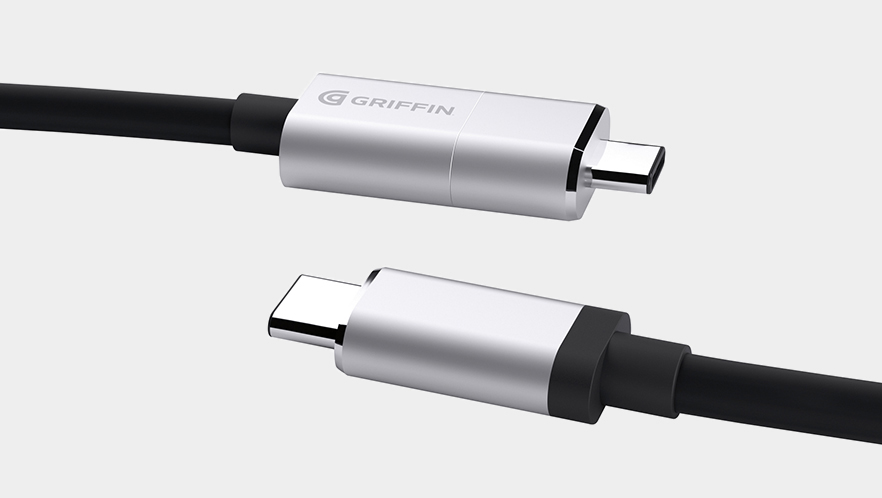One connector to rule them all — that’s the promise of USB-C. One connector for any device. One cable to carry power, data, and even video, through a single port.
But how many phones, tablets and laptops are jumping on the USB-C bandwagon? For anyone with a desk full of perfectly good USB printers, keyboards, disk drives and more, does the newer cable leave you out in the cold? We talked to the experts at Griffin Technology, and they filled us on things to know about the connector.
USB-C is growing
When USB-C hit the public stage in late 2015, availability was limited to select tablets and smartphones. Apple was the first major laptop manufacturer to announce compatibility when it rolled out its 12” Macbook with a USB-C connector in mid-2015. Since then, the train has gathered speed, with Dell, Lenovo, HP and Asus hopping on board. And Apple’s pro-level Macbook Pro is shipping with 2 USB-C ports.
The C is for ‘Connects Easily Whichever Way You Insert It’
Okay, maybe not, but the connector is reversible, so there’s no more fiddling with the plug when you insert it. Either way is the right way.
It’s powerful
USB-C is built to handle power … a lot of power. The standard USB charge cable you’re carrying with you right now is built to safely handle no more than 12 watts. That’s fine for your smartphone or tablet. But USB-C is built to handle up to 100 watts, which means you’ll be able to handle the charging for your laptop and your mobile devices with the same cord. Plans are on the horizon for it to handle power and video through the same cable; meaning someday soon, that massive monitor on your desk will need just one cord to connect it to your laptop or PC.
Your existing USB stuff still works
The USB-C uses the USB 3.1 standard for handling data and power. Without getting overly complicated, USB 3.1 means that USB-C cables are compatible via an adapter with most current USB peripherals like your printer, external drives, keyboards and mice can connect. Check out Best Buy’s offerings to keep your current gear connected and working with your new devices. You might end up needing to juggle a few dongles and adapters for a while until you replace all your peripherals with USB-C versions, but your existing gear won’t get left behind in the dark ages.
If you want to learn more, ask an expert Blue Shirt or Geek Squad Agent in your local Best Buy store. They’re great resources in getting you hooked up or keeping you connected and working with adapters and accessories.


